SRM AP and MGIT: An Alliance Fostering Research Advancements in Drone Technology

The Centre for Drone Technology, SRM University-AP, has signed an MoU with MGIT Co. Ltd, South Korea, on May 09, 2024, to facilitate research, academic, and scientific knowledge exchange in Drone technology. The agreement to spearhead research and technology developments in drone applications was signed by Dr R Premkumar, Registrar of SRM University-AP, and Mr Jeong Woo-Chul, CEO of MGIT Co. Ltd, in the presence of Mr Yun Cheol-Hun, Assistant Manager, MGIT Co. Ltd, and Dr Pranav RT Peddinti, Assistant Professor, Dept. Civil Engineering.
This collaboration signifies a major leap forward in harnessing the power of cutting-edge drone technology to address real-world challenges. The MOU facilitates the university to have experts from MGIT deliver seminars, workshops, symposia, etc., to the students and faculty of SRM AP on drone technology, its allied technologies and its applications. Undergraduate and postgraduate students and doctoral scholars of the university will also have the opportunity to be part of collaborative research projects and internships that would hugely benefit them in enhancing their awareness of drone technology.
The scope of the MOU also extends to collaboration with MGIT for national and international research funding, eligible researchers from MGIT to enrol in various courses at SRM AP, and extending the university’s academic, research and technical facilities such as laboratories, library, etc to MGIT team for research purposes.
The MOU between SRM AP and MGIT explores innovative solutions, pushes the boundaries of possibility, and revolutionises the future of drone technology.
- Published in News
Examining Karnataka’s Mandate for Signboards: Paper by Dr Vineeth Thomas
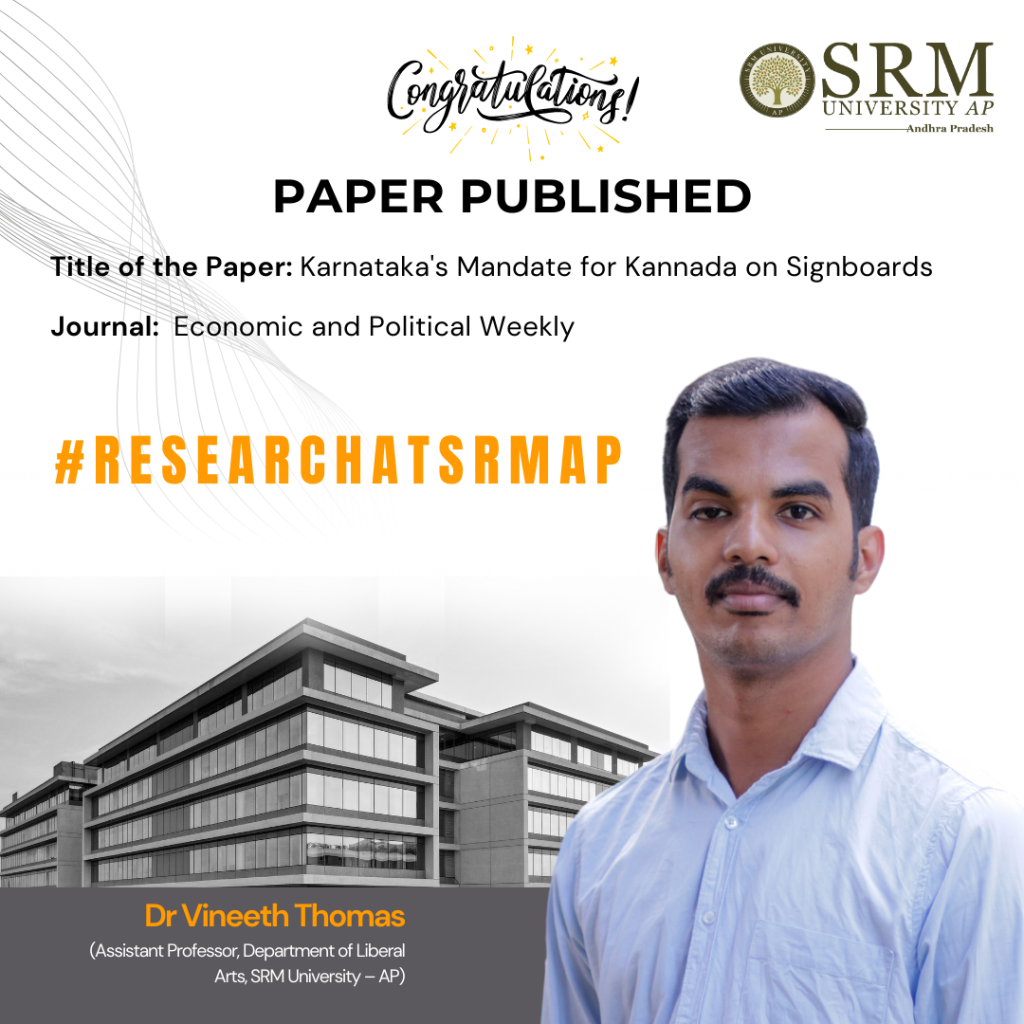
In a research paper published in Economic and Political Weekly, Dr Vineeth Thomas, an Assistant Professor at the Department of Liberal Arts, delves into the socio-political and economic implications of the “Karnataka’s Mandate for Kannada on Signboards” amendment. The article highlights the social and cultural significance of the amendment and raises awareness about the potential economic challenges it may pose. This insightful paper not only makes for an engaging read but also serves as a valuable resource for policymakers and politicians, bringing attention to the practical and social implications of the amendment.
Abstract
The Kannada Language Comprehensive Development (Amendment) Bill, 2024, ratified by the Karnataka Legislative Assembly and Legislative Council, stands as a legislative landmark with profound implications. This commentary critically analyses the socio-economic-political implications, unravelling the intricate web of influences that the Kannada Language Comprehensive Development Bill introduces within the diverse and dynamic landscape of Karnataka.
Citation
Roshmi Antony, Vineeth Thomas, Lulubala Nayak (2024)-, Karnataka’s Mandate for Kannada on Signboards, Economic and Political Weekly, ISSN (Online) – 2349-8846 (SCOPUS /ABDC Indexed)
- Published in Departmental News, Liberal Arts News, News, Research News
SRM Foundation Establish a Free Tuition Centre at Nidamarru
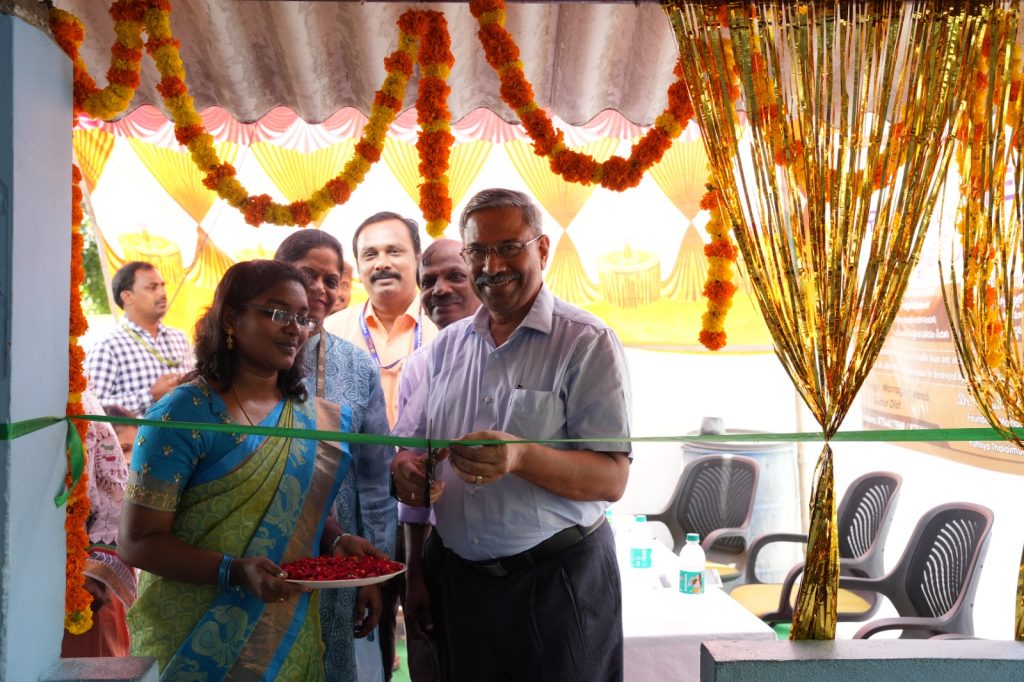
A free tuition centre was established in the Nidamarru village on Wednesday under the auspices of SRM Foundation. Dr R Premkumar, Registrar of SRM University-AP and Mrs Revathi Balakrishnan, Associate Director – Directorate of Student Affairs, jointly inaugurated the centre. Dr Premkumar addressed the students and their parents on this occasion, stating that “SRM Foundation of SRM University (Chennai), which is internationally renowned as a leading educational institution in teaching and research, is also active in social service schemes and programs in the states of Tamil Nadu and Andhra Pradesh. This tuition centre is a testament to the Foundation’s philosophy of development for the societal cause.”
The Foundation’s spokesperson, Mr Suresh Kannan, stated that the Foundation set up the first rural tuition centre to provide free education to rural students in Tamil Nadu. SRM AP Media Public Relations Manager Mr Venugopal Gangisetty further remarked that 22 tuition centres have been established in Tamil Nadu state, with 570 students being taught the curriculum. This is the first free tuition centre to be established in Andhra Pradesh.
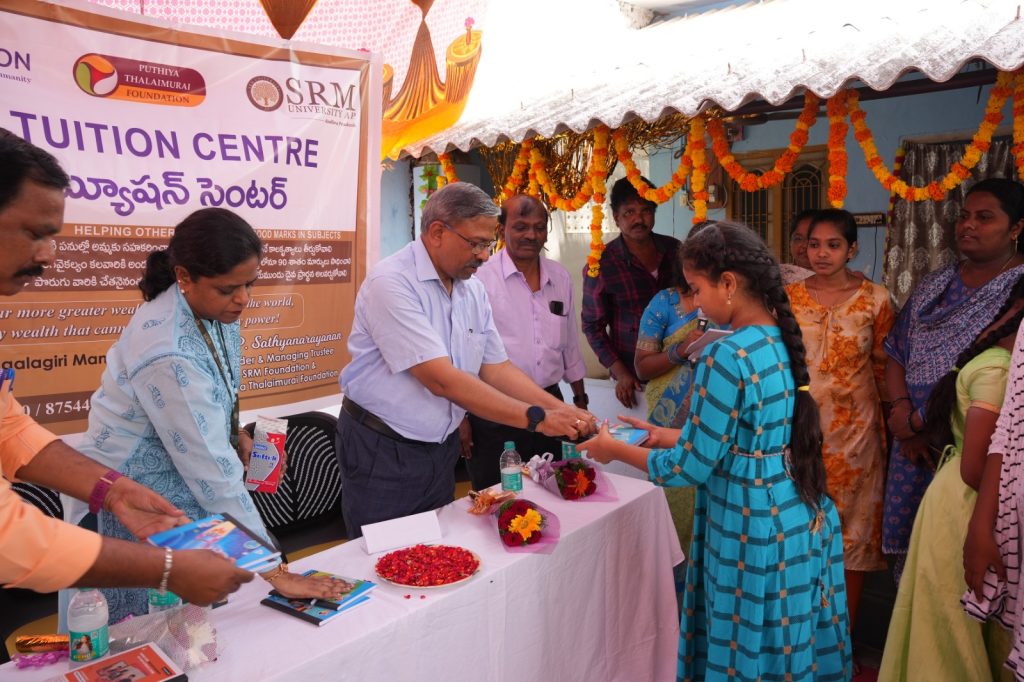
Mr Elamaran, Senior Consultant of Puthiyathalaimurai Foundation, said that students studying in sixth to tenth standard from economically backward families will be taught free of charge at the tuition centre. Many students of the villages and their parents were overjoyed as this was a remarkable hope to guarantee quality education and support for their children. Ms Prathipati Sushma, a teacher at the tuition centre, thanked SRM Foundation for setting up the first tuition centre in Nidamarru and giving her the opportunity to teach. Sweets and notebooks were distributed to the students after the program. SRM AP Chief Liaison Officer Mr Poolla Ramesh Kumar, Assistant Manager Mr Ramachandra Reddy and the residents of Nidamarru village participated in this program.
- Published in Departmental News, News, student affairs news
SRM University-AP Forges Partnership with AIMA
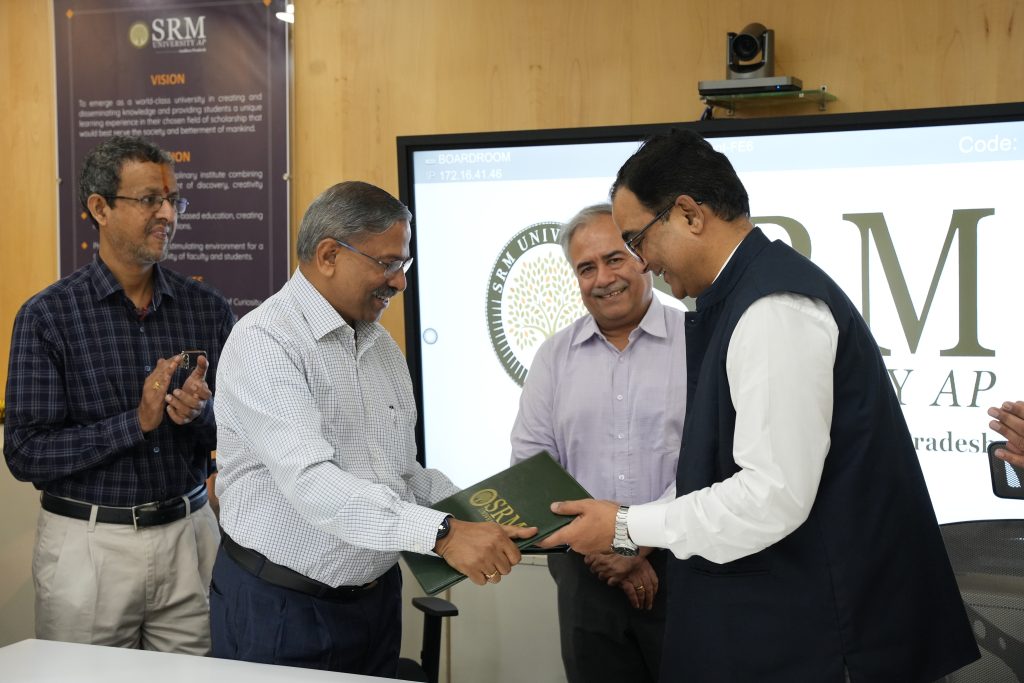
In a historic moment, Prof. Rohit Singh, Director of the Centre for Management Education at the All India Management Association (AIMA), and Dr R Premkumar, Registrar of SRM University-AP, signed a memorandum of understanding (MoU). This MoU aims to foster collaboration between the two institutions and introduce a part-time PhD programme for working professionals.
The signing ceremony was attended by distinguished personalities including Dr Ganesh Singh, Professor and Programme Director at the Centre for Management Education; Prof. Manoj K Arora, Vice Chancellor of SRM AP; Prof. Bharadwaj Sivakumaran, Dean of Paari School of Business; Prof. Ranjit Thapa, Dean of Research; Dr Vinayak Kalluri, Dean of Academic Affairs & Controller of Examinations; Dr Maheshwar Dwivedy, Associate Dean of Practice School & Associate Professor; Dr Mahesh Kumar Ravva, Assistant Dean of Research; Dr Satyanarayana Duvvuri, Professor of Practice; Dr CA Mahalakshmi Mudliar, Associate Professor and Head of the Department of Management; Dr A Lakshmana Rao, Associate Professor and Head of the Department of Commerce; and Dr Lalita Mohan Mohapatra, Assistant Professor, along with other faculty members and students.
To date, more than 250 working professionals have earned their PhDs through AIMA. The institution also boasts an illustrious alumni network employed in leading companies such as Samsung, Schneider Electric, Accenture, Amazon, and Tata.
In his address, Vice Chancellor Prof. Manoj K Arora underscored the importance of a supportive research environment and the critical role of the student-guide relationship. Prof. Arora also insisted that the faculty undergo a specialised programme on “how to effectively guide a PhD.” Dr Rohit Singh, Director of AIMA, elaborated on the strategic significance in the broader educational landscape, especially for working professionals.
Members of the academic leadership, faculty, and PhD scholars joined together to congratulate the varsity on its initiative to shake hands with AIMA.
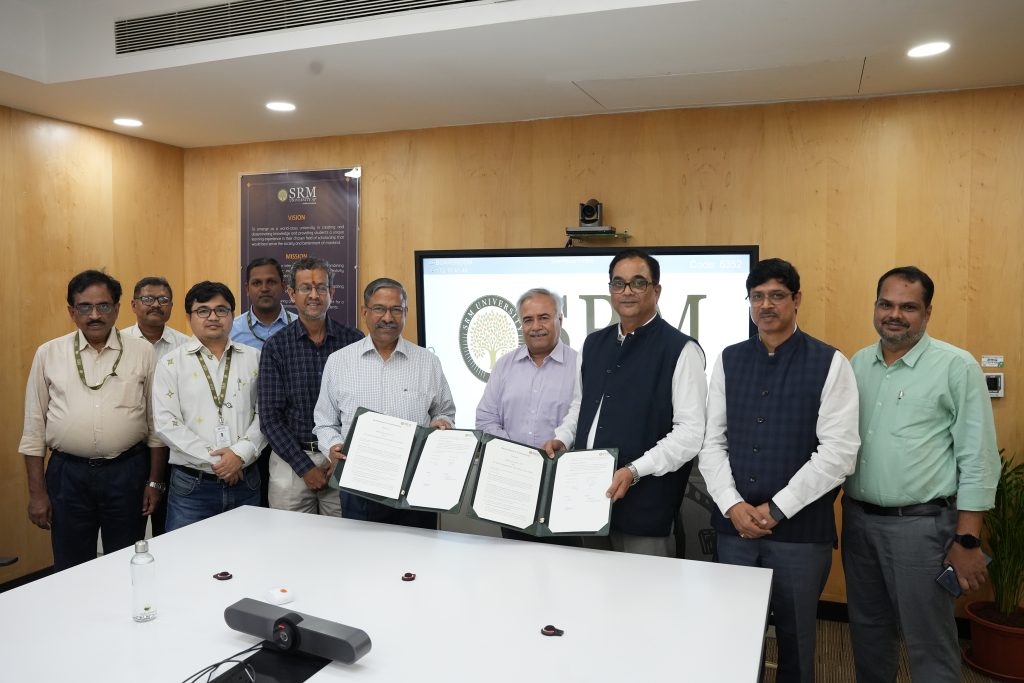
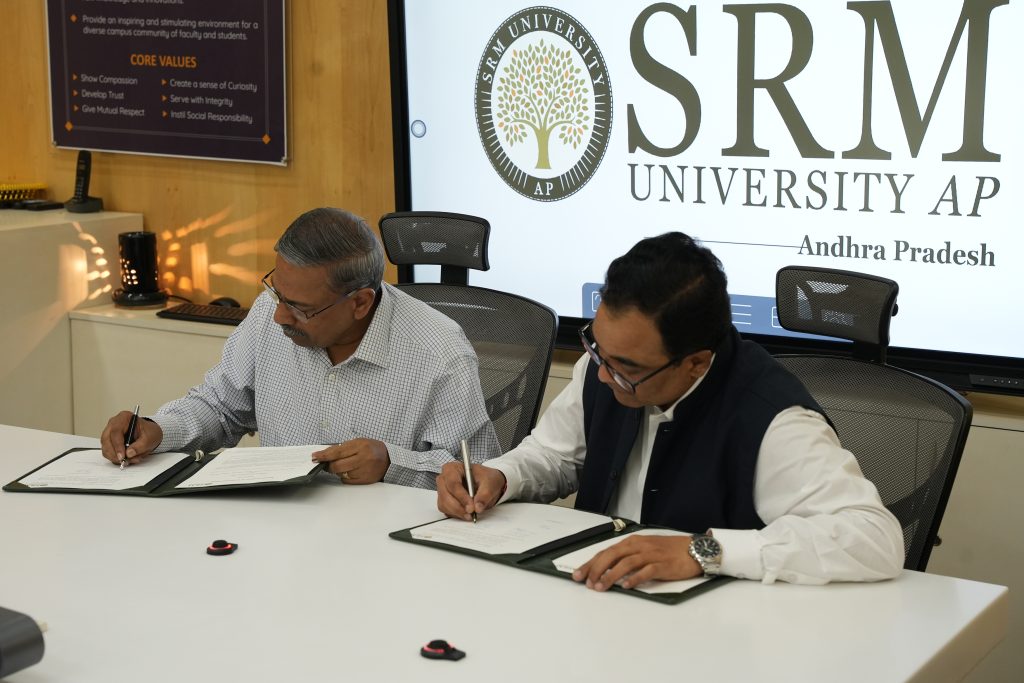
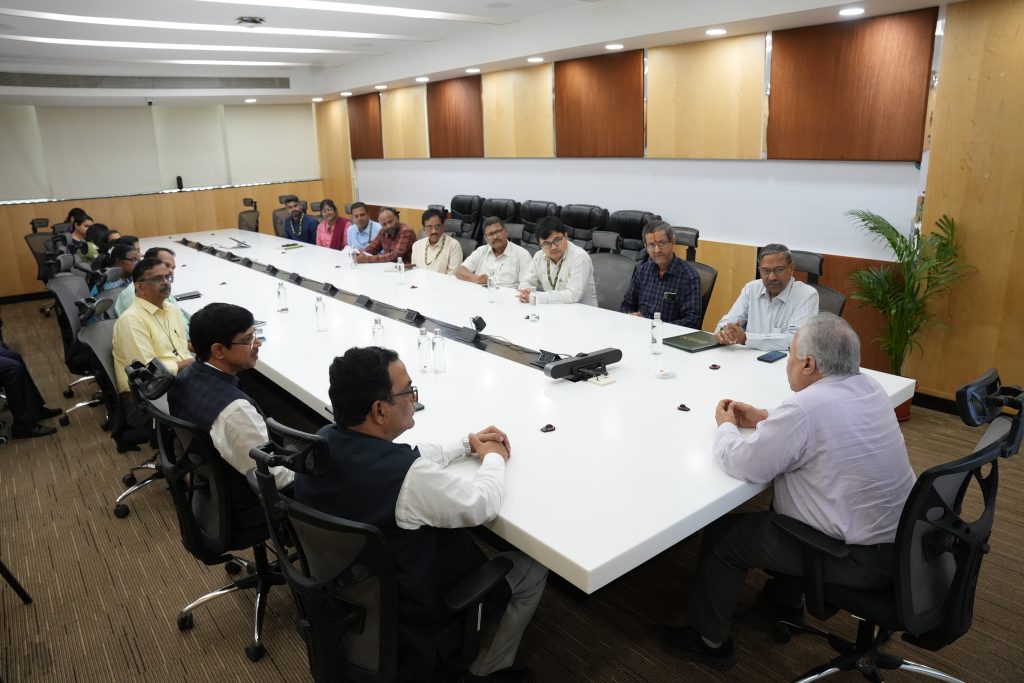
- Published in Departmental News, MoU, News, Paari Current Happenings

